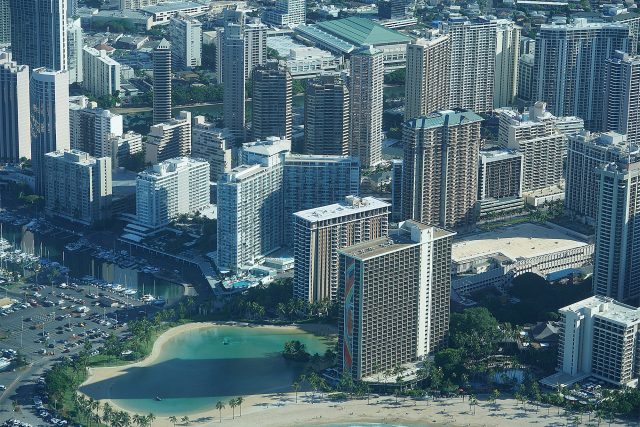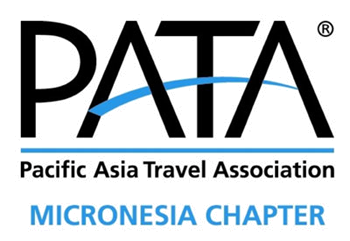Too much of our response to the pandemic has been to try to get back to normal, how things were before the pandemic… What we need is to use the disruption of the pandemic to think differently.
The global coronavirus pandemic has changed the world. It has changed how we socialize, learn and work. It has also changed how we travel.
The recently created Oahu Destination Management Plan is an attempt by the Hawaii Tourism Authority to come to terms with these changes — most importantly, the precipitous drop in tourism, but also residents’ unexpected happiness at finding the trails and beaches relatively empty for the first time in decades.
To its credit, the report clearly understands the problems. Our economy is overdependent on tourism. Tourism has real and unmitigated impacts on residents’ quality of life because of poorly managed state recreational resources, inadequate transportation infrastructure, environmental damage, and the rising cost of living.
Their proposed solutions, however, illustrate the complicated ways they are trying to appease residents while fully supporting the tourism industry.
To be clear, the DMAP is about the “stabilization, recovery, and rebuilding of the desired visitor industry.” It is about bringing “better managed” tourism back to pre-pandemic levels, not limiting it.

The key word here is desired. Desired by whom? The HTA? Hotel companies? Local residents?
Later, the DMAP clearly states that the HTA has no jurisdiction over actually limiting the number of visitors or reducing the number of rental cars on the island. This is disingenuous.
There are ways to reduce the number of visitors but the HTA is not interested in these. The entire report has no discussion about carrying capacity, or the total number of tourists.
However, the first action item is to “decrease the total numbers of visitors to a manageable level by controlling the number of visitor accommodations, and exploring land use, zoning, and airport policies.” This sounds like they have heard local residents but a closer look at the language reveals the problems.
The first two items involve strongly limiting illegal and legal vacation rentals. The last action is to “study methods” and “explore changes” that might reduce the development of new resorts, condos or change airport policies.
According to their own data only 10% stay in vacation rentals and yet most of their action items target this 10% while weakly suggesting we study and explore means of slowing the growth of large scale resort and condo infrastructure. The HTA has heard residents’ concerns about too many tourists and then decided to fully support the growth of the industry.
We need to diversify the local economy. This is an item the HTA decided is beyond the scope of this plan but they offer two suggestions: the film industry and inviting over newly remote workers for longer term stays.
These are easy suggestions because they are already happening. During the pandemic, remote workers moving to Hawaii led to increased housing and rental prices even as vacation rentals were being shut down and residents moved away. This illustrates the problem of trying to improve affordable housing by shutting down vacation rentals or improving the trails by implementing a fee system. Neither actually solve the problem you are trying to solve.
If we need affordable housing, build affordable housing. Or better yet, significantly reduce wait times for Hawaiian Home Lands so Native Hawaiians who deserve land and homes can get them. If we want more and better trails then we need to spend the money to build and maintain them.
The other complex issue addressed is transportation. Three of the four biggest issues — traffic, overcrowding, and environmental damage — are all linked to the failures of our state’s transportation infrastructure. Long standing issues like parking near trailheads or beaches like Lanikai and turtle-speed traffic at Laniakea illustrate the total failure of the responsible parties on Oahu to effectively manage the problem. The Oahu management plan suggests improving public transportation, bike paths, and pedestrian areas.
This is awesome; however, in another part of the document they suggest regulating tour buses and shuttles. If each tour bus reduces the need for 20 rental cars, why are we targeting them? If tour buses are simply bringing too many people to a site that can’t handle it, then we need to discuss carrying capacity.
Ignoring Climate Change
The difficulty with the HTA’s plan to resolve these contradictions for Oahu illustrates the challenging position they are in. They want to continue to support, expand, and develop tourism without actually addressing issues of overall carrying capacity or realistically addressing Hawaii’s housing crisis, increasing cost of living, and environmental degradation.
These are complex issues that the HTA can’t address by itself, but a first step would be a realistic analysis of the role of tourism in these problems.
The largest of these contradictions is the impact of global climate change. According to the DMAP, one of the threats to tourism in Hawaii is a long-term shift to lower carbon travel. If a necessary component of saving the planet we live on is a “threat” to Hawaii’s tourism industry, maybe we should rethink tourism.
With climate change, we need to reduce our driving and flying. A carbon tax, a reduction of oil subsidies, or any number of developing public policies could significantly raise the price for both driving and flying and dramatically impact tourism.
This is what happened to the sugar industry: Federal tariffs changed and sugar production became less profitable. This is all the more reason to prepare now and diversify Hawaii’s economy, develop strong public transportation networks, and local agricultural systems in preparation for the inevitable.
Too much of our response to the pandemic has been to try to get back to normal, how things were before the pandemic. The DMAP, although it has a number of great ideas, is an extension of this kind of thinking. The problem is that normal didn’t work for a lot of people and it really didn’t work for the global climate.
What we need is to use the disruption of the pandemic to think differently. Maybe the best way to reduce the number of tourists is to simply stop advertising. Stop trying to convince people to come and then spend the money we save on maintaining our trails, developing our public spaces, providing affordable housing, and restoring ecosystems.






